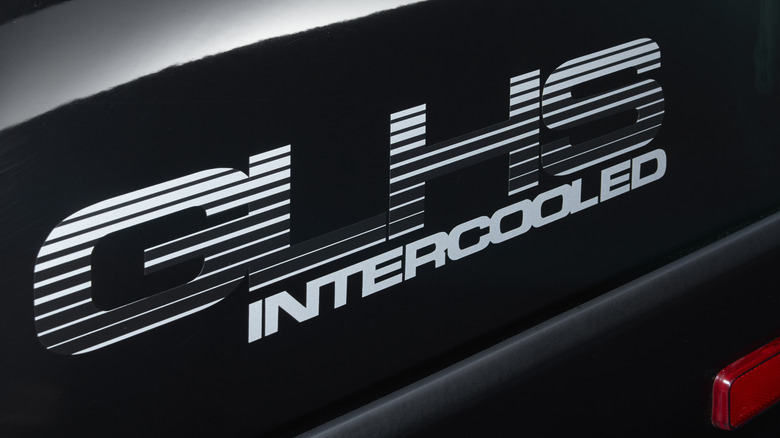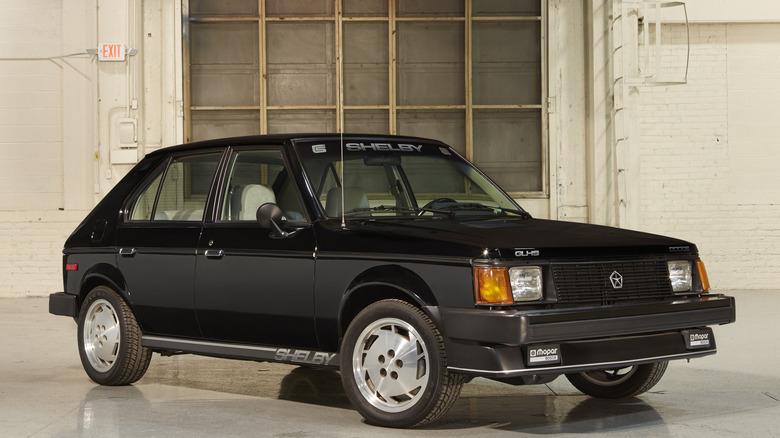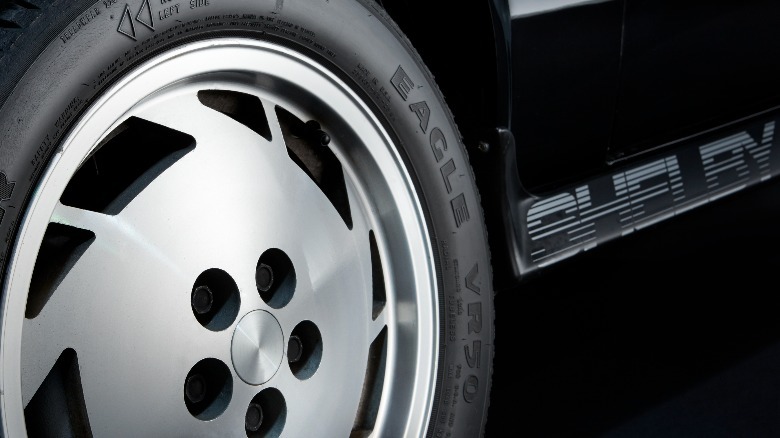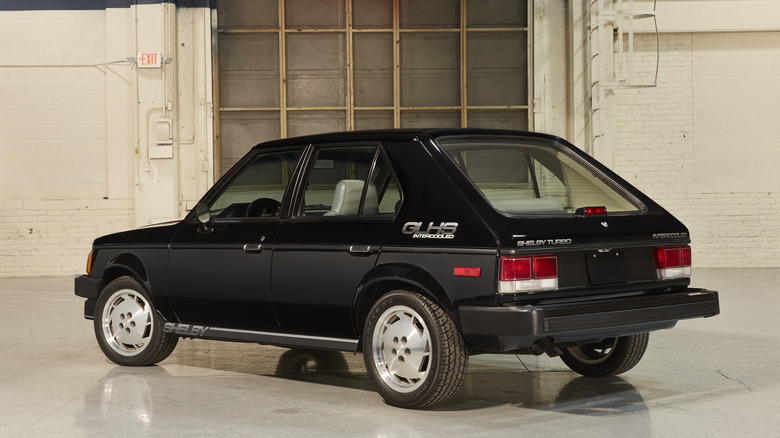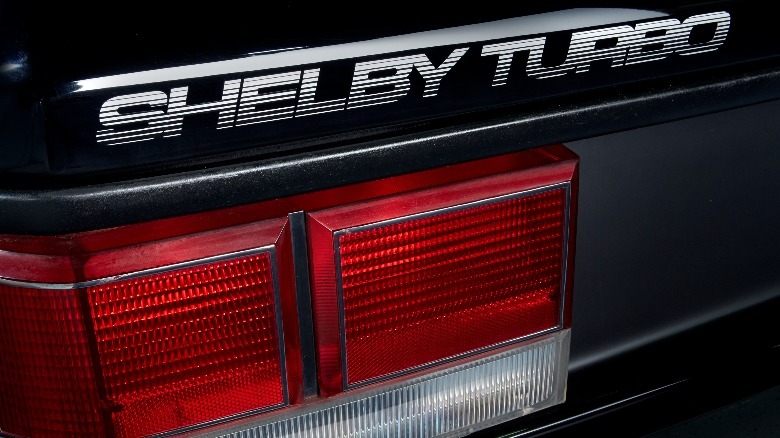The 1986 Dodge Omni GLHS Was Ahead Of Its Time
Fast hatchbacks, "hot hatches" as they are colloquially known, were incredibly popular stateside for a number of years. Cars like the Volkswagen Golf GTI, Ford Focus ST and RS, and the hatch variant of the Subaru WRX STI were just some of the cars that gained an near cult following. Nowadays, the Golf GTI and the Golf R are essentially the only hot hatches still available in the United States.
In 2022, American manufacturers are decidedly more focused on trucks and SUVs than compact hatchbacks, "hot" or otherwise. Ford discontinued the Focus in 2018 along with much of its lineup, and Chevy axed the Cruze hatchback in 2019. Long before the Cruze and the Ford Focus, Dodge had the Omni hatchback. For years after it was launched in 1978, the Omni was an economy hatchback to complement Chrysler's K-car sedans and coupes. It kind of looked like a Volkswagen Golf if you were standing really far away. The Omni was initially not a hot hatch at all, until Carroll Shelby himself took a look at it.
A hellacious hatch
In the mid-1980s, Carroll Shelby — a legendary designer, car racer — and his team at Shelby Automobiles were done with Ford, and Dodge was the racing icon's new playground (via Car and Driver).
The VW Golf similarities were more than skin deep as originally. The Omni borrowed a powerplant from Volkswagen, but by the time the mid-1980s rolled around, the Omni moved with the help of a Chrysler-made 2.2-liter inline four-cylinder engine that made "enough" horsepower (via Allpar). The slightly spruced up version, the Omni GLH (literally "Goes Like Hell"), utilized a turbocharger to boost horsepower to 146. After Carroll Shelby and his team of engineers got a hold of it, that engine was given an intercooled turbocharger, and horsepower was bumped up to a healthier 176. Shelby also tuned the suspension, gave it new wheels, and painted it black. The new Super Omni was dubbed the Omni GLHS (Goes Like Hell – Shelby). Only 500 were ever made for 1986, it sole year of production, according to Car and Driver.
At this time in Chrysler's history, the company had basically said goodbye to sedans and wagons powered by huge emissions-strangled V8s from the past that barely provided any power. Forced induction was the way to go, and Dodge was slapping turbochargers on everything from minivans to convertibles, something practically unheard of among American automakers in the 1980s. Turbochargers were certainly in use by models from Ford and Chevy, but not nearly the scale that Chrysler used them.
Making history
Reviews from the 1980s adored the special Omni and noted that not only was it incredibly fast, it could go head-to-head with V8 powered cars and not skip a beat. Its 176 horsepower wasn't a lot, but it was a powerhouse over 30 years ago, and it was greatly helped by both the adjustable suspension components and the fact it only weighed just over 2,500 pounds, making it extraordinarily light.
The GLHS was one of the first conventional American "hot hatches," decades before Ford decided to give American versions of the Focus the "go fast" treatment with the Focus ST and RS. It also utilized Chrysler's then ubiquitous turbocharged engine. Nowadays, with Ford's EcoBoost engines and Chevy's EcoTec line of powerplants, it's hard to find an economy car that doesn't have a turbo option.
Although the Omni GLHS had a short run, it showed American automakers at the time that you absolutely did not need a V8 to go fast. All you need was a turbocharger, a four-cylinder, and some engineering know-how from one of the greatest automotive minds to ever live. Simple as that.
